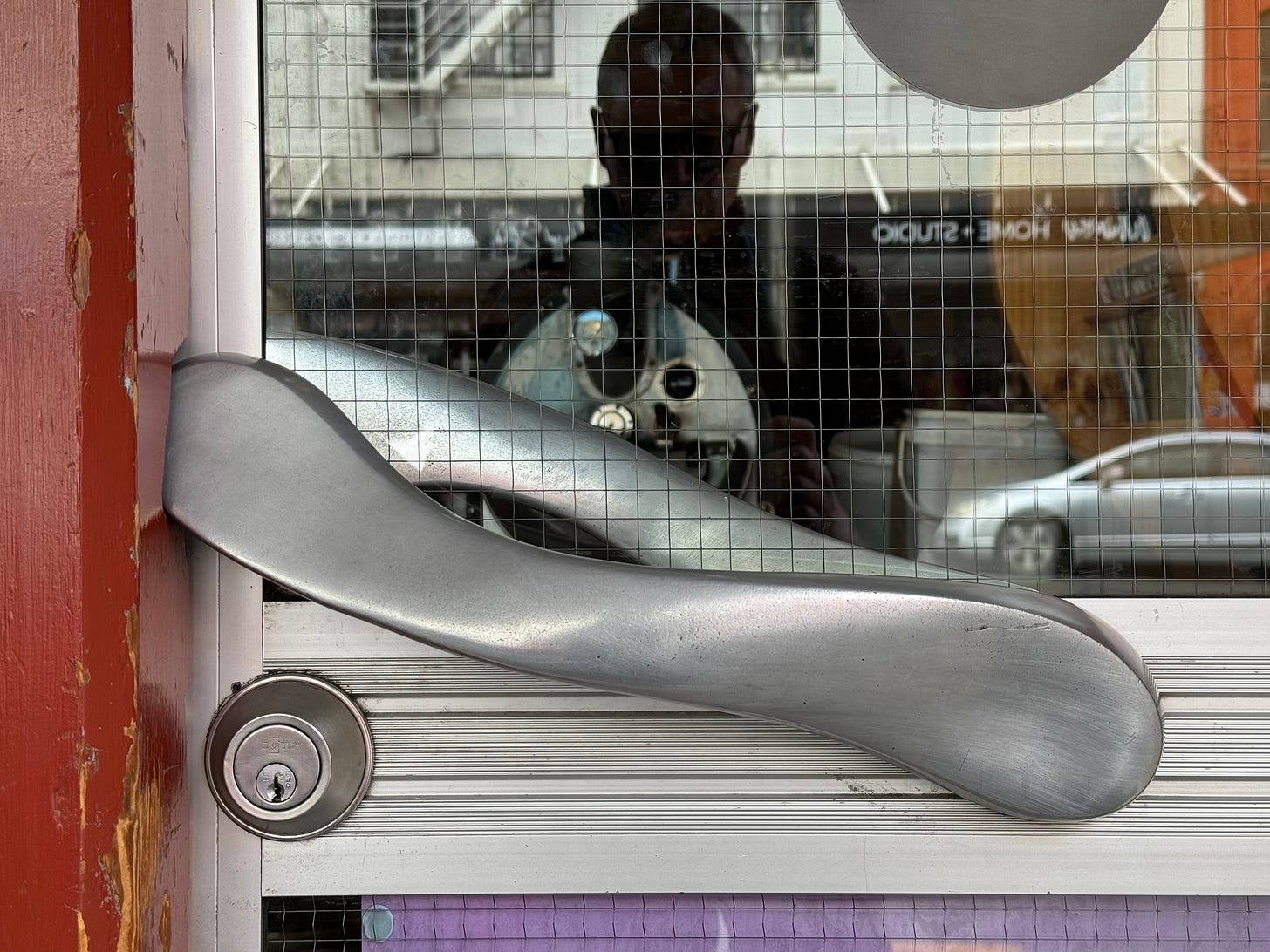As I was leaving my favorite coffee shop recently, I noticed the handle on the door on my way out. Something about it was appealing. I raised my phone and took a photo as a visual note, then kept walking. Because I was thinking about door handles, I noticed others. I snapped two more nearby and uploaded all three to my Instagram account, which I use as a visual diary. I was carrying my ‘proper’ camera, a Sony a7iii, but it remained in its bag.
I use my phone to collect thoughts and ideas that I would otherwise forget. Sometimes, I immediately share these quick visual notes on Instagram. I use the Snapseed app on my iPhone to first straighten and crop the images as necessary. I also add white bars so they conform to the square format that Instagram was originally designed to accommodate.
Occasionally, I attempt to take a more considered photograph with my phone, but it doesn’t seem to work as well for me as using my non-phone camera. I prefer the slower, more deliberate process that the full-frame, mirrorless camera requires. I set the desired f-stop and shutter speed and I try to keep the ISO close to 100. The screen on the back of my Sony a7iii is always off. I prefer to frame a scene using the viewfinder, which crops out the visual noise around the subject and helps me to frame a composition.
Here are the three photos I took with my iPhone 15 Pro Max (I believe the 'Max' refers to the price).



Later, I thought about these handles and why they are worth considering. A door handle is where we shake hands with architecture. It’s the first point of physical engagement and gives us a sense of the personality of the building we are about to get to know better. It sets the tone for the encounter.
When you think about it, few parts of a building engage us physically. We see much more of a building than we touch. We behold the facade and record its image in our minds. We cast our eyes up and around, outside and inside, taking in the surfaces, shadows, and ornamental flourishes. We imagine the weight and texture of what we can see, but we can’t get close enough to investigate and feel it. Instead of covering a wall with expensive marble, painting it to look like marble is often sufficient, as we can’t tell the difference from a distance. However, a handle, like a hand, is gripped and held. Its shape either conforms to our grasp or it doesn't. We experience its color close up and can feel the texture of the surface material. We can guess what it’s made of.
Real engagement with the world and with other people requires physical contact. That’s why it is so important to our mental and physical health. Perhaps that’s why we make and treasure physical prints and photo books. Maybe I’ll make a photo book or zine about door handles.
What’s next?
I’m continuing to participate in and document political rallies here in Dunedin, New Zealand. There is a lot to protest at the moment, and it’s important to document these events and the people involved.
Yesterday, while taking photographs of a group opposing recent cuts to disability services, I sprained a leg muscle (I was running, crouching, and twisting to get the shots I wanted). Now, stuck at home with my leg up on ice, I’ll finish processing the photos I took at that rally. Links to photos of past rallies can be found on my website (markmcguire.net). Recently, I've also taken photos of construction hoardings, interesting walls, and people on the streets, which I will share soon.
Until next time, here’s a photo of Alfie going over the chants for the protest march with some of the participants.

What do you think?
I invite you to leave a comment below.




I have recently become interested in macro photography with a focus on mushrooms (because they are so pretty lol) but I am thinking of things to photograph that are everyday object... like boor handles. They are now on the list of things to photograph... thanks
Hands are the most intimate part of a person. I will now think of door handles as the most intimate part of building. Very interesting perspective...“A door handle is where we shake hands with architecture.”